Housing prices in Chicago have risen rapidly during the last decade, but they have not risen evenly. While prices on average have climbed considerably in the city as a whole, some neighborhoods have been much hotter than others.
How does one determine which neighborhoods are “hot?”
Well, that of course depends on how you define the term. For real estate types, a neighborhood is often considered hot in the earliest stages of rehabbing and development, especially if it’s somewhat run-down, with bargain prices and big potential for appreciation. That’s the outlook of the professionals, though, who see communities in terms of dollar signs. Home buyers are certainly concerned with investment value, but if they plan to live in a neighborhood for five or ten or twenty years, it’s not the only or even the biggest concern.
Our list of “hot neighborhoods,” admittedly a subjective one, factors in appreciation, but also takes other considerations into account – safety, services, convenience, amenities – home buyers’ typical concerns. Certain popular neighborhoods, such as Lakeview and Lincoln Park, have not been included despite high marks for livability. Prices in these areas simply are already too high for the neighborhoods to be considered hot.
The neighborhoods we have selected are not necessarily places where buyers will get rich by investing in real estate, but these areas do show the promise of above-average appreciation for years to come. They also meet certain minimum standards for livability. Some neighborhoods not on the list may well be “hotter” in terms of investment value, but if they did not have a certain level of safety or services we did not include them.
Perusing our list of hot neighborhoods is not a bad way to begin the search for a home, but the bottom line in selecting a location should be the most common sense criterion: does it seem like somewhere you’d like to live? If a neighborhood passes that test, odds are you’re making a good decision. These days, almost any neighborhood in the city seems like a safe bet.
Albany Park
Median house: $325,000
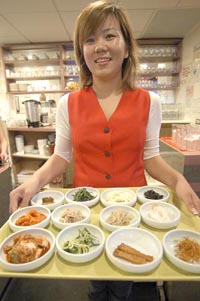 Bordered roughly by Montrose, Foster, Pulaski and the North Branch of the Chicago River, Albany Park has become one of the city’s most diverse neighborhoods. The flavor here ranges from Middle Eastern to Latin to Korean to Serbian. The restaurants and shops reflect that colorful mix.
Bordered roughly by Montrose, Foster, Pulaski and the North Branch of the Chicago River, Albany Park has become one of the city’s most diverse neighborhoods. The flavor here ranges from Middle Eastern to Latin to Korean to Serbian. The restaurants and shops reflect that colorful mix.
There is a fair amount of poverty in the community, but pressure from the Ravenswood / Lincoln Square area to the east and Irving Park to the south has been pushing up property values and encouraging condo conversions, especially on the eastern edge. Ravenswood Manor, which despite its name is really a part of Albany Park, is a beautiful riverfront enclave whose vintage apartment buildings are rapidly going condo. Housing in this corner of the neighborhood is getting pricey, but go a few blocks west or north and a home costs much less than in Ravenswood, directly east – one sign of a potentially hot neighborhood.
The median price of a single-family home here rose to $325,000 in 2004, up 18 percent over the median in 2003, according to the Chicago Association of Realtors. The median condo price has risen 65 percent during the last five years, but at $195,000, it’s still much lower than most of the North Side.
Bridgeport
Median house: $559,192
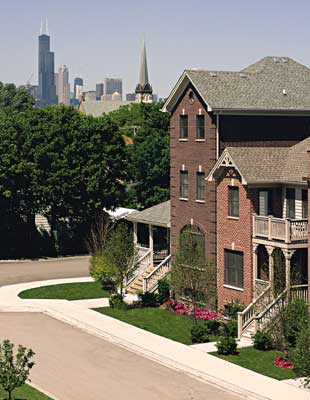 The Near Southwest neighborhood of Bridgeport, directly west of U.S. Cellular Field, a.k.a. Comiskey Park, is bounded roughly by the South Branch of the Chicago River, the river’s South Fork, Pershing Road and the railroad tracks that run alongside Stewart. The colorful working class enclave has supplied Chicago with mayors for more than 50 of the last 100 years and remains the heart of the Democratic organization in Chicago.
The Near Southwest neighborhood of Bridgeport, directly west of U.S. Cellular Field, a.k.a. Comiskey Park, is bounded roughly by the South Branch of the Chicago River, the river’s South Fork, Pershing Road and the railroad tracks that run alongside Stewart. The colorful working class enclave has supplied Chicago with mayors for more than 50 of the last 100 years and remains the heart of the Democratic organization in Chicago.
Bridgeport was settled first by the Irish and Germans, hired to build the Illinois and Michigan Canal, and later by additional waves of immigrants – Swedes, Poles, Lithuanians, Czechs and Italians. Each group formed its own community, developed its own churches and bakeries, and guarded its precious turf, often with the aid of street gangs.
But in-fill development, including the Armour Park Homes, Bridgeport Station, Bridgeport Commons and Bridgeport Village (a project that may total more than 400 houses on 40 acres when complete), has brought new life to old streets. During the last few years, Bridgeport has been one of the city’s fastest appreciating neighborhoods. The median single-family home here sold for $559,192 last year, a 218 percent increase over 2002.
Humboldt Park
Median house: $150,000
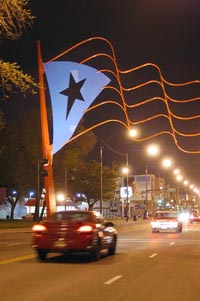 Bounded roughly by Chicago, Armitage, Western and Pulaski, Humboldt Park is a sprawling neighborhood that varies significantly from pocket to pocket. The northeast enclave has been dubbed “West Bucktown” by developers eager to lure home buyers from Bucktown and Wicker Park, directly east. Farther west, the edgier blocks (some with gang problems) have seen little development and though prices have risen, they’ve done so much more slowly than in the rest of the city.
Bounded roughly by Chicago, Armitage, Western and Pulaski, Humboldt Park is a sprawling neighborhood that varies significantly from pocket to pocket. The northeast enclave has been dubbed “West Bucktown” by developers eager to lure home buyers from Bucktown and Wicker Park, directly east. Farther west, the edgier blocks (some with gang problems) have seen little development and though prices have risen, they’ve done so much more slowly than in the rest of the city.
The median single-family home here was just $150,000 in 2004, low compared to citywide averages and incredibly low for a conveniently located North Side neighborhood. That median house price was 11 percent higher than in 2003 and 74 percent higher than it was five years earlier.
Humboldt Park makes the list because prices are still surprisingly low here given the location and because it is surrounded on three sides by trendy neighborhoods that have gentrified rapidly. But developers’ movement westward may be tumultuous. The Puerto Rican community that dominates here has been pushed west for years as neighborhoods like Lincoln Park and Bucktown gentrified, and there is a concerted effort to keep housing affordable.
Loop
New East Side
Median condo: $260,000
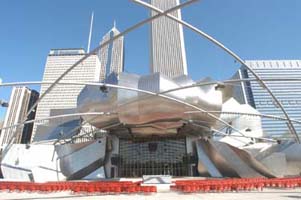 In addition to the Loop proper, bounded by the elevated train tracks that circle the city center, this label is used for the blocks that fall between the lake on the east, the river on the north and west and Roosevelt on the south. Once the domain of businesses and institutions, the Loop / New East Side has become one of the hottest residential locations in Chicago.
In addition to the Loop proper, bounded by the elevated train tracks that circle the city center, this label is used for the blocks that fall between the lake on the east, the river on the north and west and Roosevelt on the south. Once the domain of businesses and institutions, the Loop / New East Side has become one of the hottest residential locations in Chicago.
New developments in the area include Metropolitan Tower, Metropolis, the Columbian, Waterview Tower and the Heritage at Millennium Park. Lakeshore East, a 28-acre development that will include nearly 5,000 homes at Randolph and Lake Shore, has seen brisk sales at highrises the Regatta, the Lancaster and 340 on the Park.
The stunning new Millennium Park has been one of the most obvious attractions for buyers. Another factor will one day make prices of half a million here seem like an absolute steal. While views and access to the lake and parks are unparalleled, the amount of property available for development is extremely limited. And that’s a hot combination.
The median sale price for a condo in the Loop was $260,000 during 2004, according to CAR, up 16 percent over the year before.
Near South
Median condo: $318,174
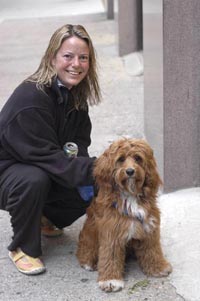 At press time, Enterprise Companies was nearly half sold at its latest Central Station highrise, Museum Park Place, and a new sizeable development called Vision on State was touting sales of 40 percent at the start of marketing. The South Loop is one big construction zone, with new condos and townhouses sprouting on every block, and lately, buyers seem to be snapping them up faster than they can be built.
At press time, Enterprise Companies was nearly half sold at its latest Central Station highrise, Museum Park Place, and a new sizeable development called Vision on State was touting sales of 40 percent at the start of marketing. The South Loop is one big construction zone, with new condos and townhouses sprouting on every block, and lately, buyers seem to be snapping them up faster than they can be built.
The Near South Side, bounded by Roosevelt on the north, the lake on the east, 26th on the south and roughly the Chicago River and the Dan Ryan Expressway on the west, was once decried even by fans as uncomfortably short on amenities and services. But new restaurants (at press time at least three more were planned to open), major grocery stores and other businesses have raised the comfort level considerably. Given the daily population growth in the South Loop, this trend is likely to continue.
The median condo price on the Near South Side was $318,174 in 2004, up 54 percent over 1999, according to CAR. The city has spent lavishly on new infrastructure for this new neighborhood, and proximity to the lake, Grant and Millennium parks and amenities such as the Art Institute make the long-term investment outlook here more than solid.
Near West
Median condo: $291,000
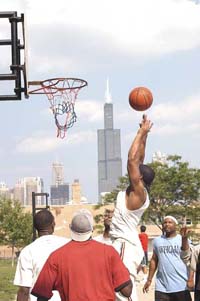 This broad area, bounded roughly by Kinzie, the Chicago River, 16th and Talman, is really a collection of various neighborhoods, some settled and others not-so. It includes the West Loop, which contains some of the city’s top restaurants and a large stock of chic condos and lofts, and blocks west of Ashland that are in earlier stages of development.
This broad area, bounded roughly by Kinzie, the Chicago River, 16th and Talman, is really a collection of various neighborhoods, some settled and others not-so. It includes the West Loop, which contains some of the city’s top restaurants and a large stock of chic condos and lofts, and blocks west of Ashland that are in earlier stages of development.
This is often the recipe for a hot neighborhood, an emerging community on the edge of one that’s highly developed. Building has pushed west of Ashland with projects such as Westhaven Park, 764 housing units a couple of blocks north of the United Center; and the new West Village Homes, comprising up to 110 new houses and condos. The redevelopment of the Chicago Housing Authority’s Henry Horner Homes is bringing new market-rate and subsidized homes into the area and spurring development.
In the southeast corner of the neighborhood, the mixed-use University Village has transformed Halsted with commercial and residential development. Newer projects such as University Station and University Commons are continuing the trend, using proximity to the UIC campus and the popular blocks surrounding it to expand development. The median price for an attached home on the Near West Side was $291,000 in 2004, 40 percent higher than in 1999.
Rogers Park
Median condo: $182,000
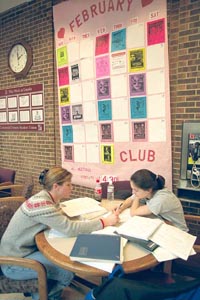 The city’s first neighborhood, bordered by the city limits on the north, the lake, Devon and Ridge, makes the list with some reservations. We include it because quite simply, it is the last place to buy an affordable home on the north lakefront. In a market where prices have skyrocketed, a growing number of buyers have moved north to purchase their first homes here.
The city’s first neighborhood, bordered by the city limits on the north, the lake, Devon and Ridge, makes the list with some reservations. We include it because quite simply, it is the last place to buy an affordable home on the north lakefront. In a market where prices have skyrocketed, a growing number of buyers have moved north to purchase their first homes here.
The median condo and townhouse price in Rogers Park has more than tripled since 1995 and still was only $182,000 during 2004. That compares favorably with Edgewater because the average condo here is larger. A steady stream of vintage buildings with large apartments in the neighborhood has converted to condos, and several new townhouse developments also have risen.
Our reservations stem from safety concerns that still are very real in Rogers Park, where drug deals and street crimes are visible in some pockets. But even notorious sections such as Howard Street and the “Juneway Jungle” have made significant progress (several former drug houses have been converted to condos), and in the best sign for the neighborhood, the rate of homeownership in the rental-heavy area has been rising steadily.
Uptown
Median condo: $249,630
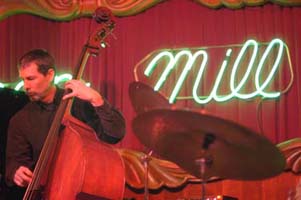 Bordered by Irving, Clark, the lake and Foster, this diverse lakefront neighborhood has been “hot” for longer than many real estate developers care to remember. So why does it make the list? Because for better or worse, the tide seems finally to have turned in Uptown.
Bordered by Irving, Clark, the lake and Foster, this diverse lakefront neighborhood has been “hot” for longer than many real estate developers care to remember. So why does it make the list? Because for better or worse, the tide seems finally to have turned in Uptown.
Ald. Helen Shiller has moderated if not changed her stance on development, enough to win the endorsement of longtime foe Mayor Richard Daley last election. Residential development and rehabbing have been steady if slow here for well over a decade, and several new high-profile projects may finally tip the scales.
Metropolitan Development is building 127 condos and townhouses at Rainbo Village, 4826 N. Clark, priced from the $230s. Joseph Freed Homes built new loft condos and 41,000 square feet of commercial space, including a new Borders Books & Music in the old Goldblatt’s building, at Broadway and Lawrence. ViCor Development is building the Sheridan Grande, and a little south, the so-called Wilson Yard, a former CTA property, is slated for an eight-acre redevelopment. The median condo in Lakeview cost $317,000 during 2004, but cross Irving Park Road, and the price in neighboring Uptown falls to $249,630.
